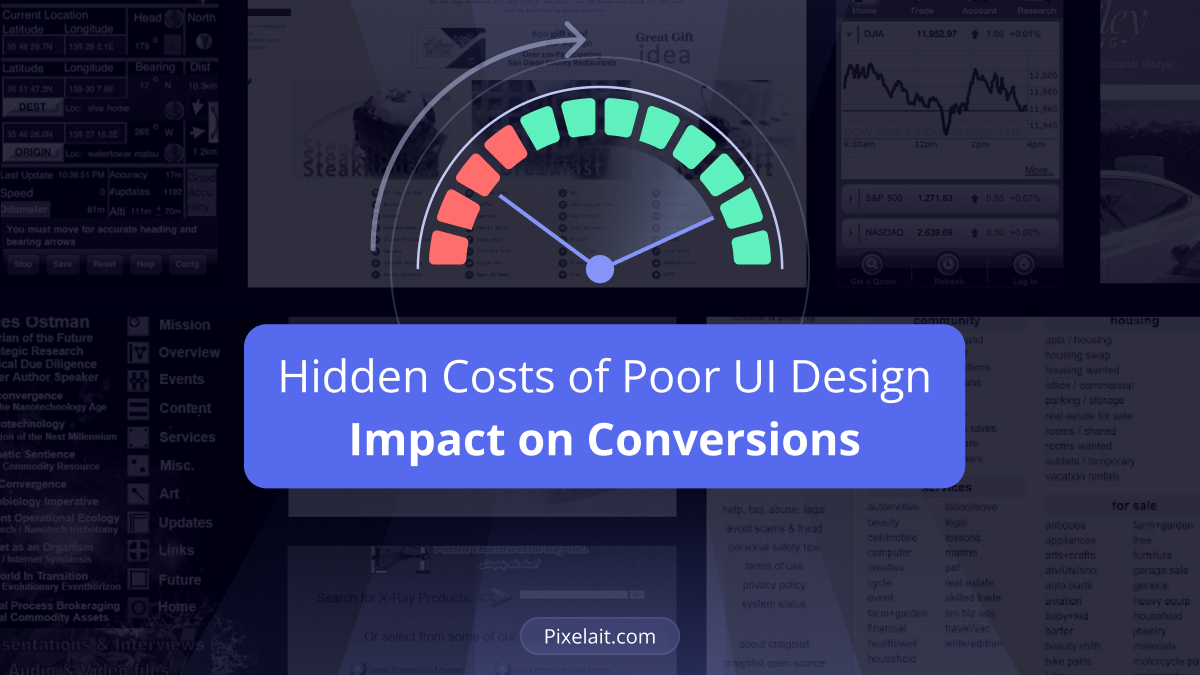When it comes to website and app performance, UI design isn’t just about looks—it directly affects conversions. A poorly designed interface frustrates users, increases bounce rates, and silently drains potential revenue. But what are the hidden costs of bad UI, and how can you avoid them? Let’s break it down.
1. High Bounce Rates and Lost Users
A cluttered or confusing interface can drive users away within seconds. If visitors struggle to find what they need or encounter usability issues, they won’t stick around. This is especially true when key design elements—like color contrast in dark mode UIs—aren’t optimized. Poor readability and accessibility push users away before they even engage. Learn why color contrast is critical in dark mode UIs.
2. Increased Customer Support Costs
A well-structured UI guides users seamlessly through an app or website. But when navigation is unclear, buttons are misplaced, or forms are confusing, users need extra help. This leads to more support tickets, higher operational costs, and an overwhelmed customer service team. A clear, well-thought-out UI design can reduce these issues significantly. Check out key considerations for crafting an effective UI.
3. Lower Conversion Rates and Revenue Loss
Every additional step, unnecessary form field, or confusing layout element creates friction in the user journey. If users struggle to complete a purchase, sign up, or find key information, they’re more likely to leave. Even small UI mistakes can lead to missed sales opportunities.
4. Poor Brand Perception and Trust Issues
Your UI is a reflection of your brand. A website full of typos, inconsistencies, or broken design elements signals a lack of professionalism. Even grammar errors in your interface can make users doubt your credibility. Here’s a list of the best grammar-checking tools to keep your UI typo-free.
5. Higher Redesign Costs
Fixing UI mistakes after launch is expensive. A poorly designed UI often requires multiple iterations, redesigns, and rework—costing both time and money. Investing in good UI design from the start saves resources and prevents costly overhauls later.
Bonus: Top 5 SEO Companies in Southend-on-Sea
A strong UI paired with effective SEO is the winning combination for any digital business. If you’re looking for experts to help your website rank higher and attract the right audience, check out SEO Southend. This list highlights some of the best SEO companies based in Southend-on-Sea, offering everything from on-page optimization to technical audits and local SEO strategies.
Working with professionals like SEO Southend can ensure your website doesn’t just look good — it performs well too.
Final Thoughts
Bad UI isn’t just an inconvenience—it directly affects business performance. From lost conversions to high support costs and damaged brand reputation, the impact is real. Prioritizing strong UI design ensures a smooth user experience, better engagement, and higher revenue.
🚀 Want to create a UI that converts? Start by understanding the essentials of great UI design and avoid costly mistakes from the start.
